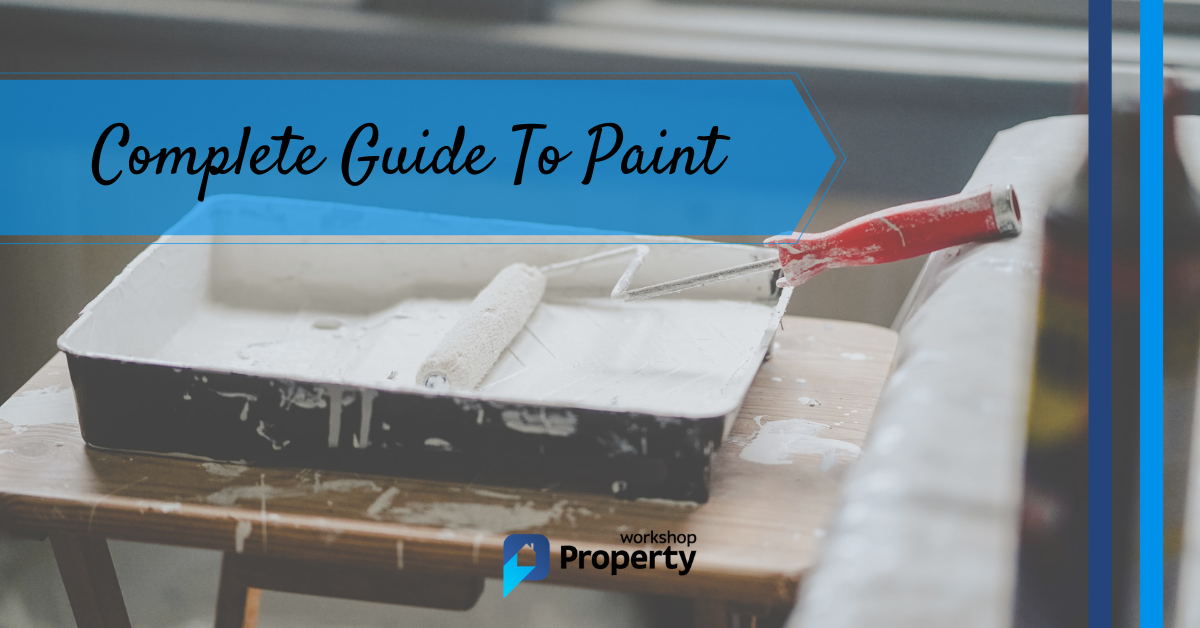Are you baffled by all the different types of paint and their many finishes? This comprehensive guide demystifies paint so you can confidently pick the best finish for your next decorating project.
We’ll walk you through everything you need to know, from choosing the perfect palette to which primer and finish to use.
Table of Contents
Choosing Your Colour Palette
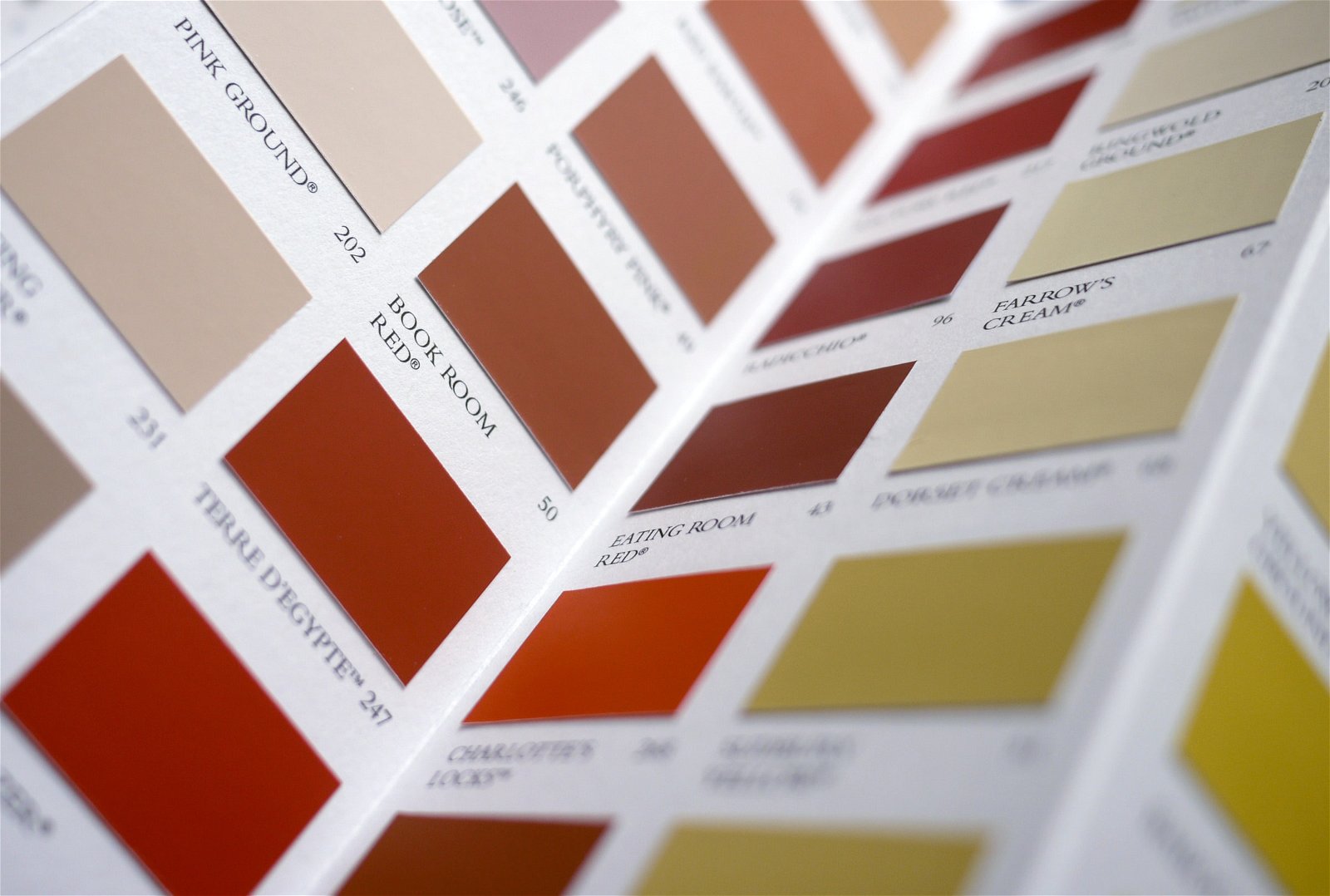
Before you start any decorating project, choosing your colour palette is the first crucial step.
If you’re stuck, start with three colours. It’s balanced visually while giving you enough variation without overwhelming the room. Begin with a neutral shade and choose two tones or shades that complement it.
Once you’ve narrowed down your colour options and have two or three potential winners, ask for sample paint pots to test at home.
Grab some A4 paper and apply two coats of each colour. Once dry, Blu-Tac them to your wall to see the colours in different lighting throughout your home. We prefer these homemade swatches over ready-made sample cards, as even larger cards can be deceptive.
Colour Palette Tips
- Consider rooms visible to one another. I.e. walk through your house and see which spaces are visible from each room.
- Technology is a great option if swatches don’t help you visualise your room in a particular colour. Dulux has an excellent Visualiser app that uses augmented reality to show you what your room will look like in a specific colour.
How Much Paint Do You Need?
If you’re unfamiliar with painting large spaces, paint calculators help estimate how much paint you’ll need based on wall dimensions. Simply type in your measurements and hit calculate.
Pigment, Binders, Liquids, Additives, and VOCs
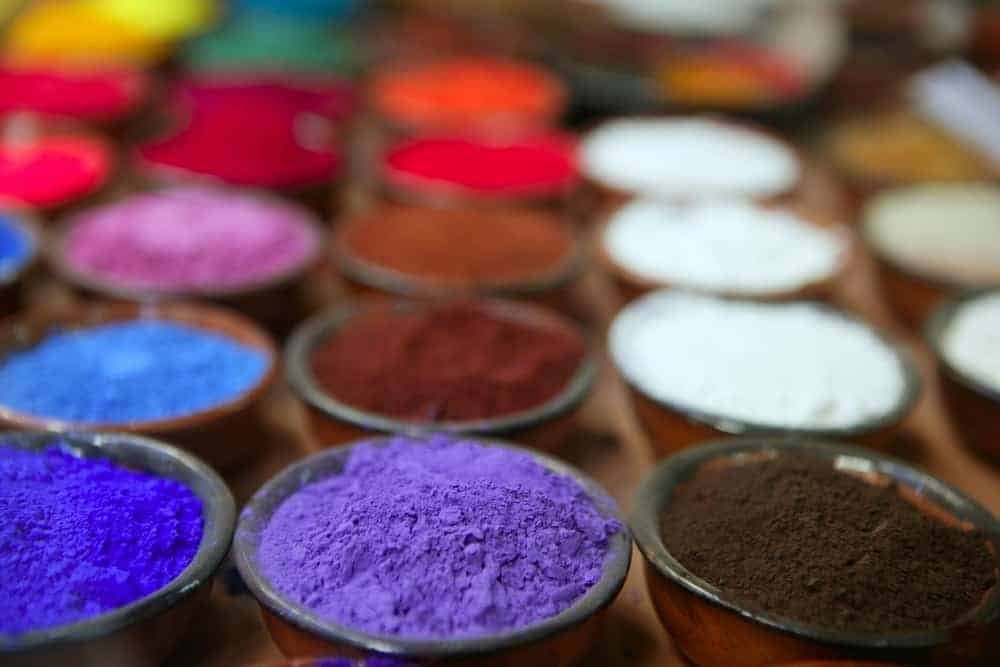
Understanding paint terminology helps you understand the different types of paint and what works for your project. Below are some important terms to understand.
Pigment
A pigment is particles of finely ground powder that provide the colour element of paint. The most common pigments come from titanium dioxide.
Binders
Binders are polymers that bind pigments together to form a strong film. In oil-based paints, you’re looking for linseed or modified oil. In water-based paints, you’re looking for 100% acrylic binders.
Liquids
Liquids hold pigment and binders together, evaporating as the paint dries. You’ll find mineral spirits in oil-based paints and water in water-based paints.
When mineral spirits in oil-based paints evaporate, a hard film/coating is left behind. Water-based paints remain durable as conditions change, improving colour longevity.
Additives
Along with pigment and binders, the manufacturing process adds additives to the paint. Additives give paint unique qualities, such as quick-dry, non-drip and glossiness.
VOCs
Volatile Organic Compounds (VOC) are organic solvents released as paint dries, producing a strong odour.
VOCs are highly flammable and can harm the environment and our health. Regular VOC exposure can cause headaches, nausea, and skin irritation. When using oil-based paints, ventilation is essential.
As their name suggests, water-based paints primarily consist of water. Water-based paints release fewer VOCs and are better for the environment and our health.
Pro Tip: To learn more about harmful chemicals in paint, check out this guide from allergy standards. As you’ll read in their guide, understanding the chemicals in paint is especially important for those suffering from asthma and allergies.
Different Types of Paint
Understanding the differences in paint types is essential for picking paint that looks great and stands the test of time.
A paint’s formula and binder are crucial to its colour durability. The formula also determines how the paint soaks into various surfaces and how smoothly it applies using paintbrushes.
Water-Based Paint
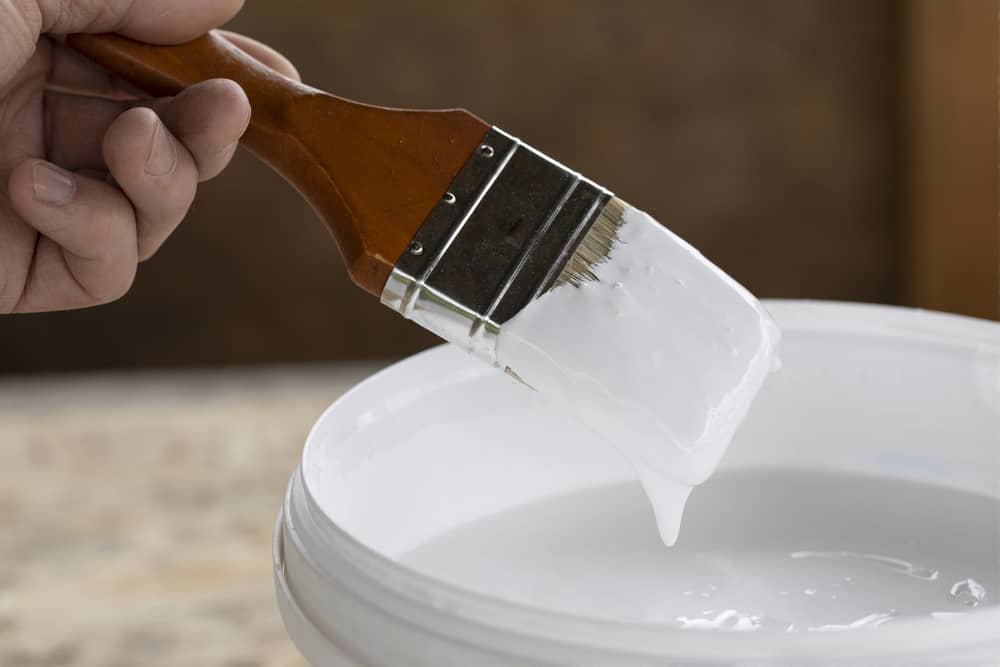
Water-based paints contain pigment and binder, with water as the carrier. These paints are excellent at retaining colour, dry faster, and produce less odour.
Furthermore, they’re also the most common and environmentally friendly type of paint.
Advantages of water-based paint
- Dries quickly.
- Release much less odour.
- Fewer VOCs.
- Easy to clean up (only needs soap and water).
- Resistant to cracking due to its flexible finish.
- Excellent colour retention.
- Resistant to UV rays (doesn’t yellow or fade in the sun).
Disadvantages of water-based paint
- Colours aren’t always as vivid.
- Less durable.
Different Types of Water-Based Paint
Let’s now look at the various types of water-based paints and how they differ.
Acrylic Paint
This paint comprises pigment in an acrylic polymer solution with acrylic resin.
Due to these chemicals, acrylic paint has better elasticity than other paints, allowing it to expand and contract with changing temperatures, reducing cracking. Furthermore, it’s unaffected by UV rays, making it an excellent outdoor option.
Acrylic paint also dries quickly, which is useful when painting small areas, but makes larger areas more difficult to cover.
It’s important to note that acrylic paints do not mix well with oil-based paints and won’t form a bond.
Emulsion
Emulsion is a water-based paint with vinyl or acrylic added for extra durability. It’s used for painting walls and ceilings and comes in a wide range of finishes, including; gloss, satin, eggshell, silk, matt or flat matt.
One Coat Emulsion
One coat of emulsion does what it says on the tin; it only needs one coat. It also offers high opacity and provides excellent coverage. However, it becomes patchy if you try to spread it too thinly.
New Plaster Emulsion
New plaster emulsions are specially designed for painting freshly plastered walls, allowing moisture from drying plaster to escape. Note: Regular paint traps moisture which leads to flaking.
Anti-mould Emulsion
Anti-mould emulsion includes a special fungicide additive that prevents mould and mildew growth.
Colour-Fugitive Emulsion
Colour-fugitive emulsion goes on pink but dries white, which is super handy when painting an existing white wall. I.e. it’s much easier to see missed spots due to the pink-on-white contrast.
Solid Emulsion
Instead of being supplied in standard tins, solid emulsion paints come in tubs which are perfect for paint rollers.
You can use a paintbrush, but we recommend a short-pile roller for better coverage.
What’s the Difference Between Emulsion and Acrylic?
Emulsions and acrylic paints are quite similar, and both feature acrylic resin in their makeup. However, we recommend using emulsion when painting larger areas, as it offers better value per litre.
Acrylic paint is typically used for artwork, whilst emulsions are more prevalent in homes and commercial projects.
Vinyl Paints
Vinyl paints work well on ceilings, as their unique light-reflecting formula provides a smooth finish and discreet sheen. These properties brighten darker spaces and make them feel bigger.
As vinyl is a thick paint, two coats are enough to cover walls and ceilings with a smooth finish that hides marks and dips. Also, the resin in vinyl paint makes it extra resilient.
Clay and Chalk Paints
Clay and chalk paints have increased in popularity over the last few years and have become the go-to paints for upcycling projects.
Because clay and chalk paints don’t contain acrylics or oils, there are no strong odours or high levels of VOCs, making them a popular choice for children’s bedrooms.
Oil-Based Paint
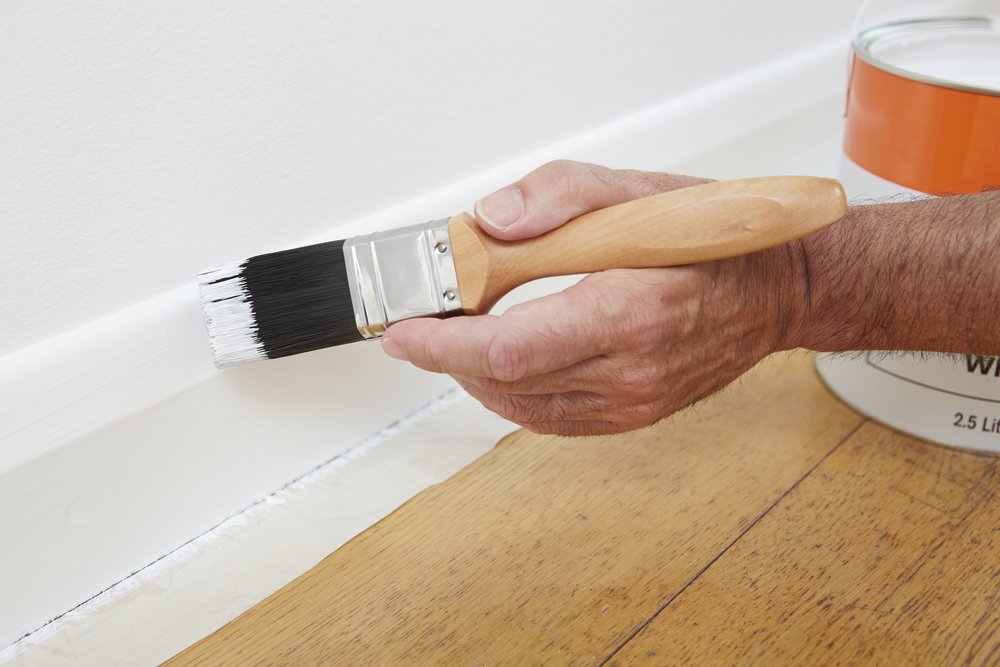
Oil-based paints contain natural oils (like linseed oil) or synthetic alkyd with pigment and resin.
The resin forms a hard film as the solvent evaporates during drying. This film makes oil-based paints incredibly durable. It also makes them stain-resistant, making oil-based paints ideal for skirting boards, railings and mouldings.
Advantages of oil-based paints
- Glossy finish.
- Great for rooms with lots of moisture, like bathrooms and kitchens.
- Durable finish — perfect for high-traffic areas.
Disadvantages of oil-based paints
- Longer drying time.
- Messy — always have paint thinner, mineral spirits and turpentine nearby when working with oil-based paints.
- Contains much more VOCs.
- Produce a strong odour when drying.
Oil-Based vs Water-Based Paint — Which is Better?
There’s no clear winner, as each type has its pros & cons.
The paint type you choose depends on your project. For example, water-based paints are better for bedrooms (and your health), whereas oil-based paints are better suited for bathrooms and kitchens.
Still unsure which one to choose? The points below may help:
Finish
- Oil-based paints provide higher sheen levels. However, this sheen fades and becomes duller over time.
- Water-based paints provide lower sheen levels, but this sheen is longer-lasting.
Durability
- Due to the resin in oil-based paints, they typically dry harder and leave a durable film.
- There isn’t much flexibility in the finish, making oil-based paints more liable to crack, flake or become brittle over time.
- Oil-based paints are prone to yellowing.
- Water-based paints are flexible and more effective at resisting damage from changing temperatures.
Painting Exteriors
- For exterior surfaces, you’re best going with water-based paint. Oil-based paints repel water, preventing them from forming a solid adhesive bond.
- Water-based paints have a more flexible finish, making them excellent at expanding and contracting in changing temperatures.
- Oil-based paints break down under UV exposure, creating a chalky residue.
Application and Painting
- It takes longer to complete painting projects with oil-based paints as they’re slower to dry and go on thicker.
- Oil-based paints have an almost ‘sticky’ feel to them.
- Due to higher VOCs, oil-based paints release harmful emissions.
- Oil-based paints produce strong and lingering odours.
Clean-Up
- Thanks to water-based paints having a water solvent, brushes, rollers, and accessories are all washable with water.
- Oil-based paints require a thinner or turpentine for clean-up.
Paint Protective System
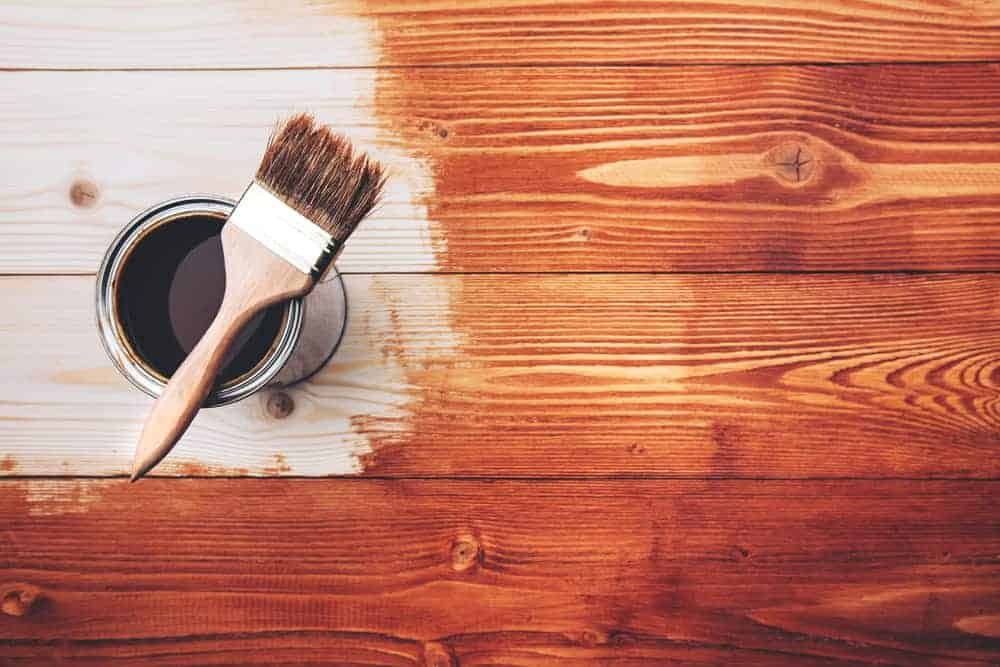
It’s important to build up your paint layers as this creates your paint protective system, adding durability to your paintwork.
If you’re painting walls or ceilings, it’s a straightforward system consisting of two or three coats of the same paint. Depending on the finish you’re painting, you might also need a primer.
Painting woodwork or metal surfaces is a more complicated process. You need to build up the layers using various paints with different qualities. For example, if you’re painting bare timber, do the following:
- Clean
- Seal — apply knotting solution
- Repair — fill holes with wood filler
- Lightly sand with fine grit sandpaper
- Apply primer
- Apply two coats of wood undercoat
- Apply two coats of topcoat
For more details, check out our guide to preparing and painting interior woodwork.
Primer and Undercoats
Primers and undercoats prepare the surface for the topcoat.
Primers fix surface issues related to the material (e.g. wood, plaster or metal) and provide good paint adhesion. They also prevent seeping/bleeding between paint layers.
Undercoats provide colour depth, an even surface, durability and excellent paint adhesion for the topcoat.
Different Types of Finishes
When choosing your finish, there are three elements to consider:
- Traffic. Rooms with heavier traffic, like kitchens, hallways, and bathrooms, need a durable finish.
- Sheen level. Professionals categorise a paint’s finish by its lustre, shininess or sheen level. I.e. the amount of light reflecting from the painted surface.
- Imperfections. Some finishes highlight flaws, while others hide blemishes and marks.
Let’s now look at the various finishes available in the UK.
Chalk
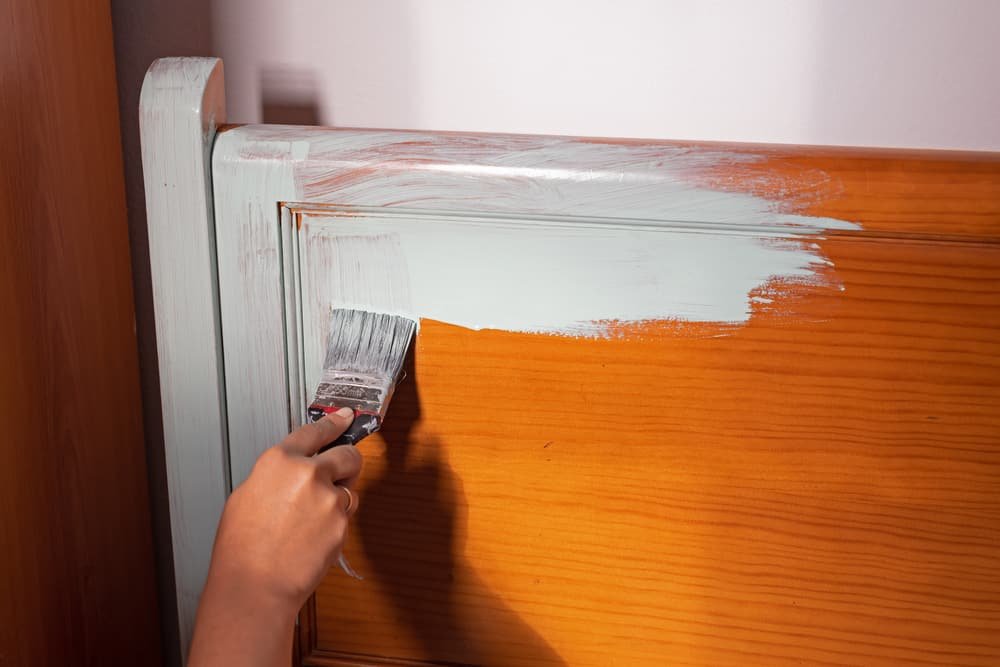
Chalk paint gives a unique finish and has seen a rise in popularity over the past few years, especially in the upcycling community. The sheen level is very low (around 3%.), with a flat finish that creates the perfect shabby chic look.
Matt
With a low sheen level, matt provides a smooth finish while also hiding imperfections. Furthermore, it has the most coverage, so it requires fewer coats.
However, matt is not the most durable, so it’s best used in low-traffic areas and on untouched surfaces such as ceilings.
Flat Matt
Flat mat has an even smoother finish than matt, providing excellent coverage and a velvety finish.
As light barely reflects off flat matt, you’ll see consistent colour across all surfaces, regardless of light levels.
Pro Tip: Flat matt works exceptionally well in darker colours and offers great colour depth.
Super Matt
Super matt has the highest opacity, which hides blemishes and provides fantastic coverage.
In particular, super matt produces excellent results on freshly plastered walls, and its thick formula means fewer coats.
Eggshell
If you want your walls as shiny as the surface of an egg, eggshell is for you! With less sheen than silk or satin, eggshell produces a classic look, especially on woodwork.
Eggshell paints are also great for covering imperfections and are typically more durable than matt finishes.
Silk
Silk has a mid-sheen level, so silk surfaces look polished and reflect light but nowhere near as much as gloss.
Silk looks lovely on walls and benefits from being durable. However, like gloss, a silk finish reveals any lumps or bumps on the surface.
Before you use silk paint, be aware that it’s more likely to show brush strokes due to its sheen level.
Satin
Similar to silk, satin is a mid-sheen paint. Satin is typically used on woodwork to hide imperfections and provide a smooth finish.
Glossier than eggshell but flatter than semi-gloss, satin tends to give colours a softer appearance on wood.
Semi-Gloss
Semi-gloss is your best option if you’re looking for an extremely durable, mildew-resistant, and shiny finish.
Moreover, semi-gloss works well in rooms with a lot of wear & tear (e.g. kids’ rooms) or damp rooms, like kitchens and bathrooms.
Remember, using glossy paint means imperfections on the surface are more likely to show. Proper preparation, such as an undercoat, helps mitigate this problem.
Gloss
This popular finish has a 90% sheen level and looks great on well-prepared wood surfaces.
Unfortunately, gloss reveals all imperfections but works well in paler colours and on skirting boards against a matt wall.
High-Gloss
The shiniest of all paints, high-gloss (aka super gloss), is incredibly durable, making it ideal for high-traffic areas. It also works well on skirting boards, railings, and exterior surfaces such as doors and shutters.
If you’re still struggling to pick the best finishes for your next decorating project, check out the video below:

Speciality Paints
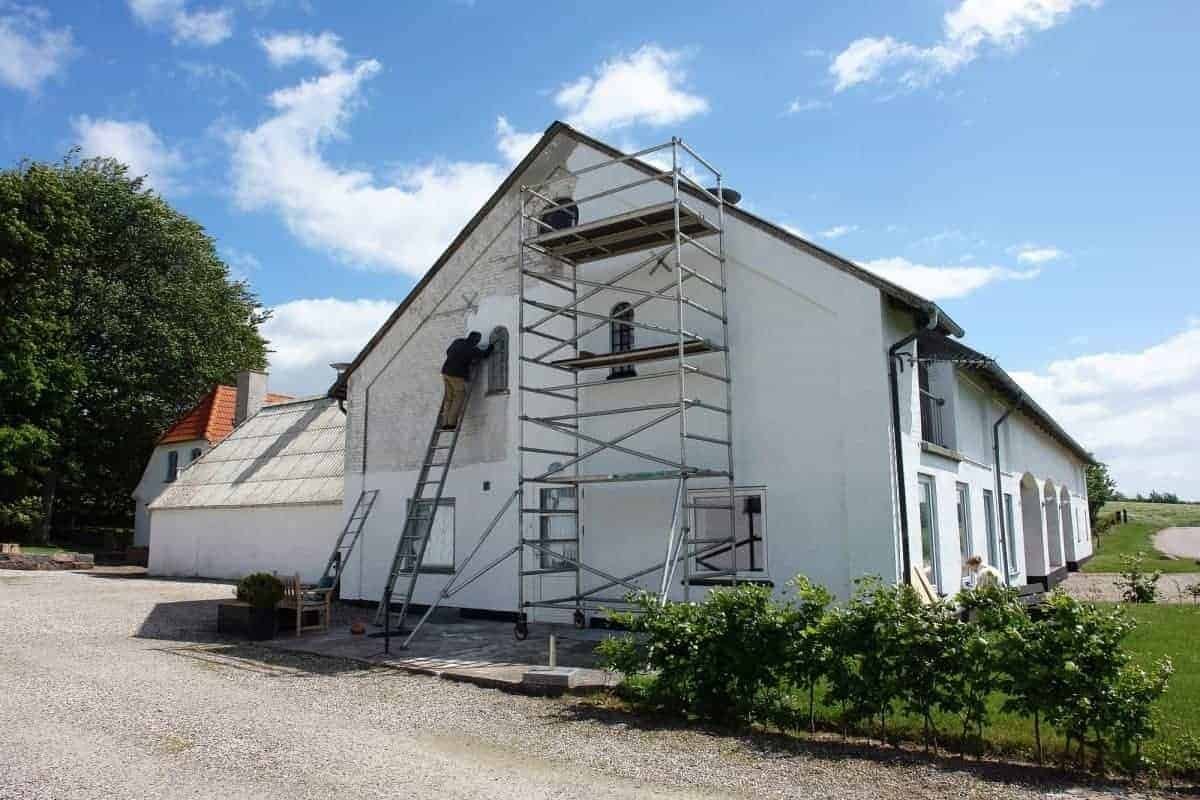
Below are the most common types of specialist paint and their uses.
Exterior Paint
A lick of paint is a great way to improve your home’s kerb appeal. According to a study by Dulux, repainting your home’s exterior can increase its perceived value by up to 25%!
The study also identified that flaky front doors are a huge pet peeve for us Brits, followed closely by cracked walls and crumbling masonry. They found that 93% of potential homebuyers are more likely to attend a house viewing if the exterior is well maintained.
When purchasing exterior paint, you must consider your local weather conditions and surface type (e.g. masonry, concrete, timber, etc.).
Textured Paint
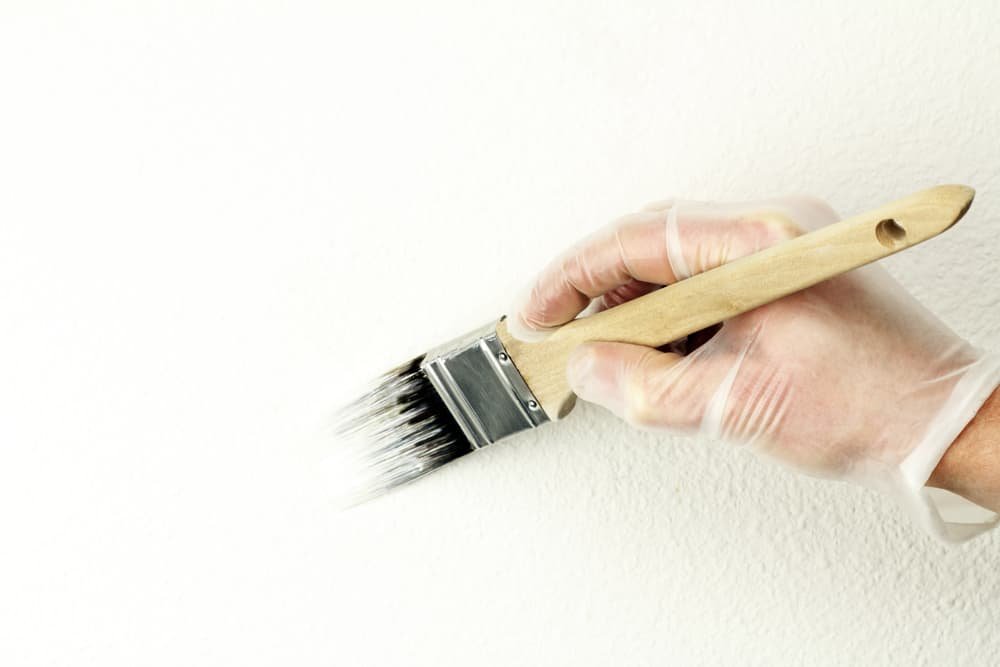
If your wall is structurally sound but has some minor cracking (up to 2mm wide), you can fix these cracks with a single coat of textured paint. These paints come in a variety of textures for various applications. For example, finer textures are better for heavy-traffic areas.
Available in matt and satin finishes, we recommend applying textured paint with a coarse-foam roller. If you’re looking for a finer texture, use a synthetic roller.
Fire Retardant Paint
Fire retardant paint prevents flames from spreading by releasing flame-dampening gas. These life-saving paints are typically water-based and work well for interiors and exteriors.
Galvanised Steel Paint
Although not designed for galvanised steel, acrylic latex works well with a primer.
However, special galvanised steel paint is always the better option. It requires less prep work, forms a better bond, and protects against the elements.
Quick-Dry Paint
Quick-dry paint is available for various surfaces, including wood, metal and plaster. By using quick-dry paint, your surface can be touch-dry within an hour.
Light Reflective Paint
Light-reflective paints are a great way to brighten a dark room.
This special paint makes spaces feel up to 40% brighter than regular paint by using unique light-reflecting particles. Check out Dulux’s Light & Space range if you want light-reflective paint.
Enamel Paint
Enamel paints are oil-based paints that dry with a high gloss finish. They’re great for coating surfaces or objects that need a weather-resistant finish.
Use enamel paints for garden furniture or other outside surfaces that must withstand British weather.
Anti-Mould Paint
Anti-mould paints are durable matt emulsions that prevent mould growth on walls and ceilings. They’re particularly beneficial in high-moisture rooms, like kitchens and bathrooms.
Tile Paint
Painting tiles is a quick and easy way to refresh your décor. Tile paint is water-based, dries fast and produces a slight odour.
Radiator Paint
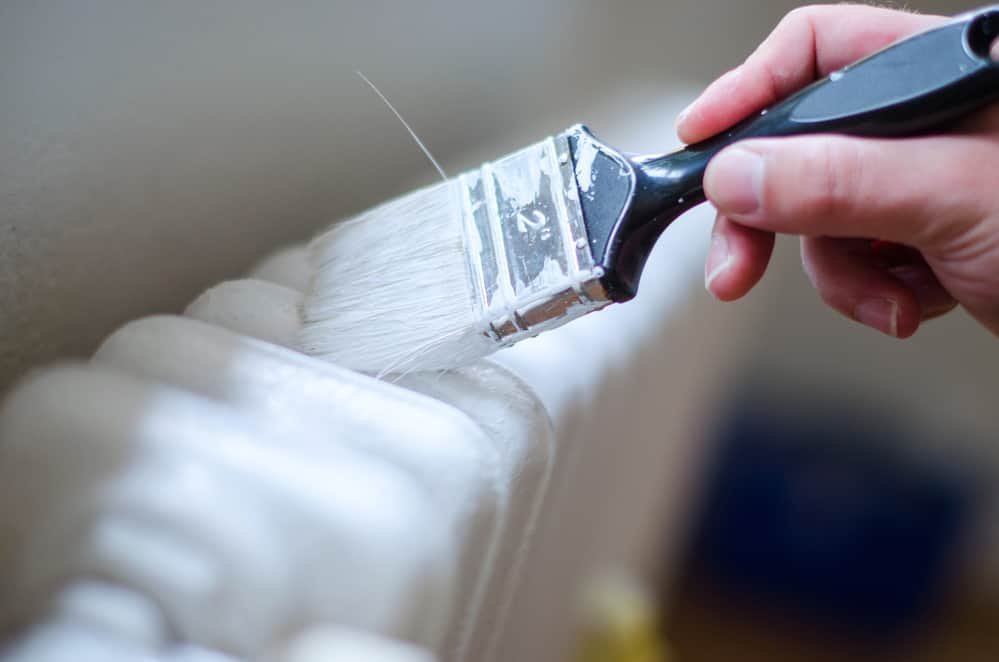
We recommend using specialist paint like Hammerite’s Radiator Enamel when painting radiators.
Radiators should always be cleaned and primed before painting, and for best results, remove the radiator from your wall if possible.
Masonry Paint
Masonry paints are designed for brick, stone and render surfaces. They’re available in various finishes, from smooth to textured.
Water-Based Masonry Paint
Most masonry paints are emulsions with anti-mould additives designed for exterior surfaces. They’re generally ready to use straight out of the tin, but we recommend mixing the first coat with 20% water. Top up with one or two topcoats as necessary.
Be warned; only apply water-based masonry paints in good weather. If it’s damp or humid, the paint won’t dry properly and will flake.
Solvent-Based Masonry Paint
Some masonry paints thin out with solvent or white spirit, which gives them the benefits of water-based paints and the durability of oil-based paints.
Unlike most oil-based paints, they’re moisture-vapour permeable, ensuring that the surface can breathe in various weather conditions.
We recommend thinning your first coat with 15% white spirit but double-check the manufacturer’s guidelines.
Reinforced Masonry Paint
Reinforced masonry paint, including powdered mica, is perfect for coastal areas because it does a great job of waterproofing exterior surfaces.
Note: Reinforced masonry paint dries with a textured finish, covering most hairline cracks and fractures.
Masonry Paint Matrix
The matrix below shows what masonry paints are suitable for each surface. The matrix also details recommended drying times, paint thinners, number of coats and expected coverage.
Note: A circle denotes compatibility. All surfaces must be clean, sound, dry and free from organic growth. Data source: Collins DIY Manual.
| FINISHES FOR MASONRY | |||||
| Cement Paint | Water-based Masonry Paint | Reinforced Masonry Paint | Solvent-based Masonry Paint | Floor Paint | |
| Suitable to Cover | |||||
| Brick | o | o | o | o | o |
| Stone | o | o | o | o | o |
| Concrete | o | o | o | o | o |
| Cement rendering | o | o | o | o | o |
| Pebbledash | o | o | o | o | o |
| Emulsion paint | o | o | o | o | |
| Solvent-based paint | o | o | o | o | |
| Cement paint | o | o | o | o | o |
| Drying Time in Hours | |||||
| Touch dry | 1-2 | 1-2 | 2-3 | 4-6 | 2-3 |
| Recoatable | 24 | 4-6 | 24 | 16 | 3-16 |
| Thinners | |||||
| Water | o | o | o | o | |
| White spirit | o | o | o | ||
| Number of Coats | |||||
| Normal conditions | 2 | 2 | 1-2 | 2 | 1-2 |
| Coverage | |||||
| Sq metres per litre | 4-10 | 3-6.5 | 6-16 | 5-10 | |
| Sq metres per kg | 1-6 |
Cement Paint
Cement paint is perfect for garages, cellars, or other areas where you’re looking for utilitarian decor. It has a matt finish with a white cement base with pigment added to achieve a range of colours.
Cement paint is very cost-effective because it comes as a dried powder for you to mix with water. Mix two parts cement powder with one part water in a clean bucket. Stir until you have a smooth paste, then add more water and continue stirring until you have a creamy consistency. Only mix as much paint as you’ll use in one hour; otherwise, it starts to dry in your bucket.
Before you decorate any surface with cement paint, spray it with water before applying two coats.
Pro Tip: Add sand to the mix if your wall is dense or treated with a stabilising solution. Add one part sand to four parts powder, but only add the sand when you’re at the paste-like stage. If the sand changes the colour of your paint, only use it for the first coat.
Concrete Floor Paint
Floor paints include special additives to make them extra hard-wearing. Concrete floor paints are particularly suitable for garages and sheds with concrete floors. They’re also used on stone steps and paving stones.
Before using concrete paint, ensure your floor is clean and dry and no oil is present. If you’re working with freshly laid concrete, allow it to rest for at least one month before painting.
If your flooring is porous, we recommend priming it with a proprietary concrete sealer like Everest’s Ultimate Concrete Sealer.
The best way to paint your floor is to go around the edges with a paintbrush. Next, use a roller fitted with an extension pole to tackle the rest of the floor.
Washable Paint
If you have toddlers or pets with muddy paws, washable paint is for you!
Washable paints are typically emulsions with a matt finish, but they’re more hard-wearing and can handle hard scrubbing without breaking down.
Surfaces
This section looks at the best types of paint for each surface. We also briefly look at stains, varnishes, lacquers and polishes when dealing with woodwork.
Woodwork

We recommend using gloss for woodwork because it’s incredibly durable and reflects lots of light.
In the past, gloss was mainly oil-based and emitted plenty of VOCs. Nowadays, gloss is mostly water-based, meaning they’re less toxic and dry quicker.
Remember, gloss is unforgiving and shows brush marks if not applied correctly. The best way to mitigate this issue is to apply an undercoat.
Stains, Varnishes, Lacquers and Polish
Stains, varnishes, lacquers and polish are the four most common finishes for woodwork and provide the final protective layer.
Stains
Whether you’re looking to stain a wood floor or upcycle furniture, stains are easy to apply, accentuate the wood’s grain and come in various colours.
Varnish
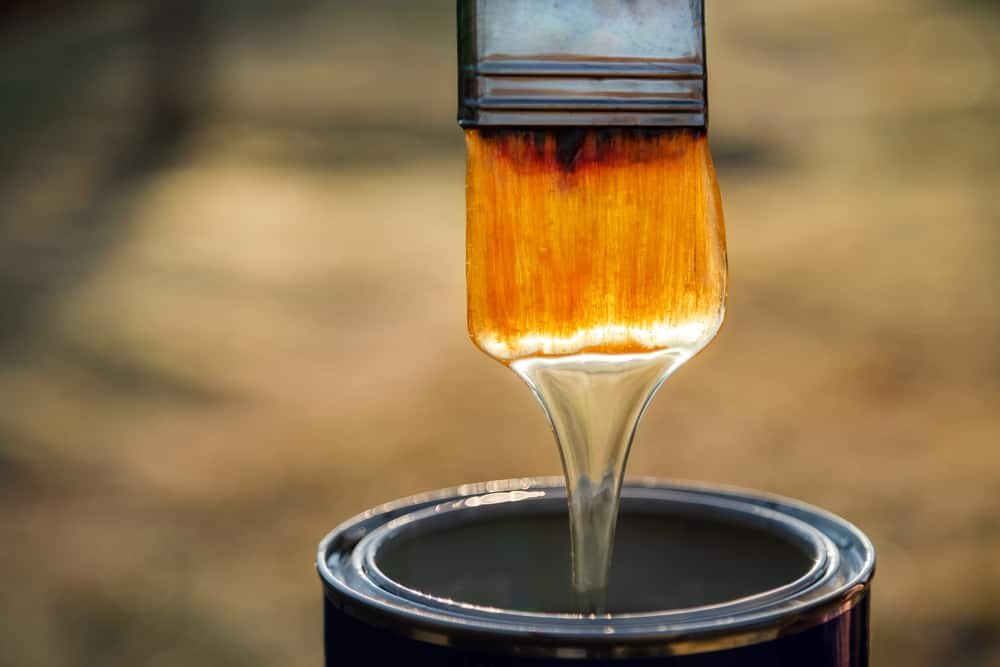
Varnishes are clear, colourless and dry quickly. They’re a great way to create a rigid, transparent finish on any wood. They work particularly well with stains, allowing the stain’s beauty to shine while adding an extra layer of protection.
However, vanishes don’t work as well on woodwork exposed to British weather or extreme temperatures.
Note: If you use an oil-based varnish, always work in a well-ventilated area and wear PPE.
Lacquer
Thinner than other wood finishes, lacquer penetrates deeper into the wood and provides a durable seal that protects the wood inside out.
You only need two coats of lacquer for the perfect high-sheen look.
Polish
Apply a few coats of polish to give your woodwork a fantastic mirror finish. For more info on using polishes and other wood finishes, check out these handy guides from Priory Polishes.
Woodwork Finish Matrix
The matrix below shows what finishes are suitable for each type of woodwork. The matrix also covers recommended application methods, drying times, thinners, number of coats, and expected coverage.
Note: Circle denotes compatibility. All surfaces must be clean, sound, dry and free from organic growth. Data source: Collins DIY Manual.
| FINISHES FOR WOODWORK | |||||||||||
| Solvent-based Paint | Acrylic Paint | Wood Dye | Protective Wood Stain | Coloured Preserver | Varnish | Acrylic Varnish | Cold-cure Lacquer | Oil | Wax Polish | French Polish | |
| Suitable to Cover | |||||||||||
| Softwoods | o | o | o | o | o | o | o | o | o | o | |
| Hardwoods | o | o | o | o | o | o | o | o | o | o | o |
| Oily hardwoods | o | o | o | o | o | o | o | o | o | o | |
| Planed wood | o | o | o | o | o | o | o | o | o | o | o |
| Sawn wood | o | ||||||||||
| Interior use | o | o | o | o | o | o | o | o | o | o | |
| Exterior use | o | o | o | o | o | o | o | ||||
| Drying Time in Hours | |||||||||||
| Touch dry | 4 | 1-2 | 0.5 | 0.5-4 | 1-2 | 2-4 | 0.5 | 1 | 1 | 0.5 | |
| Recoatable | 16 | 4-6 | 6 | 4-16 | 2-4 | 14 | 2 | 2 | 6 | 1 | 24 |
| Thinners | |||||||||||
| Water | o | o | o | o | o | ||||||
| White spirit | o | o | o | o | o | o | o | ||||
| Methylated spirit | o | ||||||||||
| Special thinner | o | ||||||||||
| Number of Coats | |||||||||||
| Interior use | 1-2 | 1-2 | 2-3 | 1-2 | 2-3 | 3 | 2-3 | 3 | 2 | 10-15 | |
| Exterior use | 2-3 | 1-2 | 1-2 | 2 | 3-4 | 3-4 | 3 | ||||
| Coverage | |||||||||||
| Sq metres per litre | 15-16 | 10-14 | 16-30 | 10-25 | 4-12 | 15-16 | 15-17 | 16-17 | 10-15 | variable | variable |
| Method of Application | |||||||||||
| Brush | o | o | o | o | o | o | o | o | o | o | o |
| Paint pad | o | o | o | o | o | o | o | ||||
| Cloth pad (rubber) | o | o | o | o | o | o | |||||
| Paint Sprayer | o | o | o | o | o | o | o |
Wet Plaster
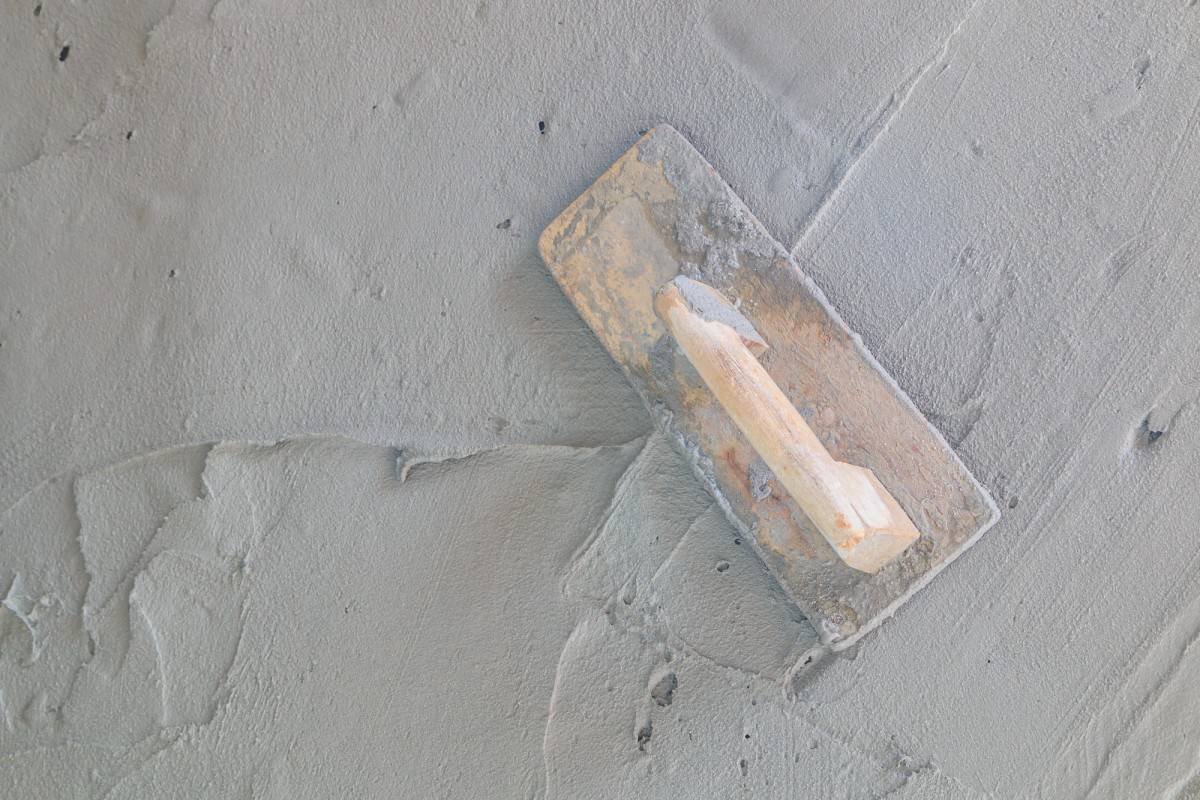
Let your fresh wet plaster fully dry out before painting. This drying process should take roughly one week.
Once the plaster is completely dry, apply a ‘mist coat‘ made from watered-down emulsion (three parts emulsion to one part water). This mist coat acts as a primer.
Give the mist coat 24 hours to dry before applying your topcoat.
Plasterboard
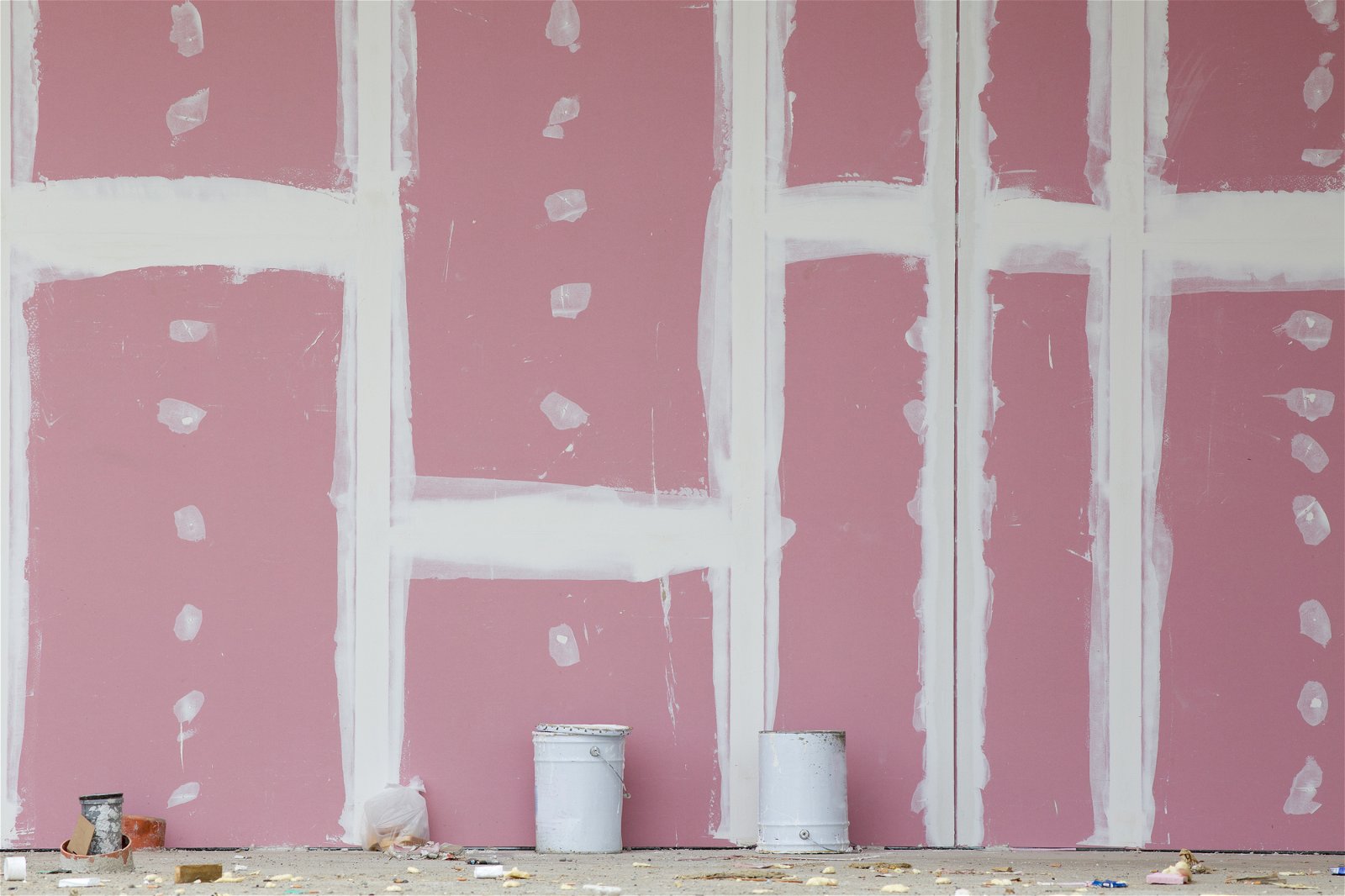
Before painting plasterboard, check the boards are correctly joined together, sealed and sanded down.
Plasterboard soaks up moisture like a sponge, so applying a primer produces better results. Once the primer has dried, apply your topcoat.
Metal
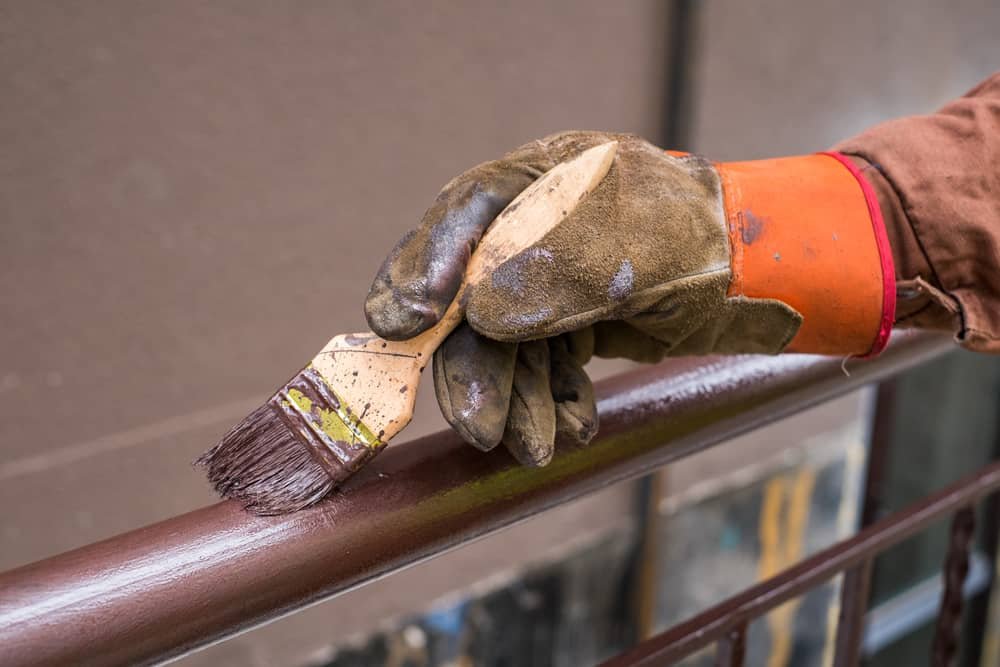
Applying a primer is essential when painting metal that comes into contact with moisture.
For metal surfaces, there are several water-based and oil-based options. If you opt for oil-based paint, remember that they take much longer to dry than water-based paints.
For application, go for a high-quality paintbrush that doesn’t shed.
Rooms
This section looks at the best finish for each room.
Kitchens
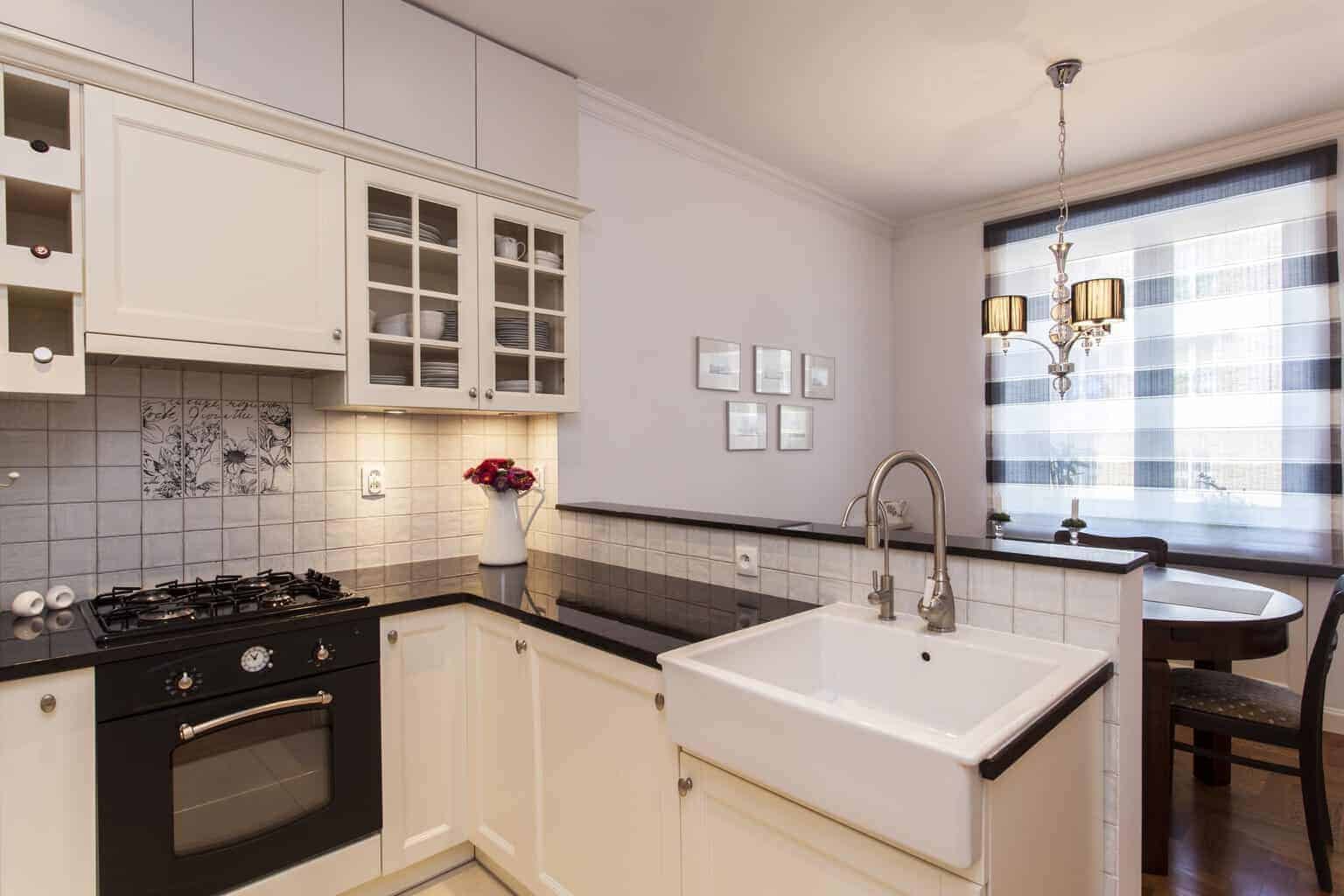
As kitchens are high-traffic areas with lots of moisture, we recommend a mid-sheen finish for the walls, such as silk or satin. These paints are durable, and their light-reflective properties provide extra brightness.
We recommend a semi-gloss finish for kitchen cabinets because it resists dirt, mildew, stains and heavy cleaning.
Bathrooms
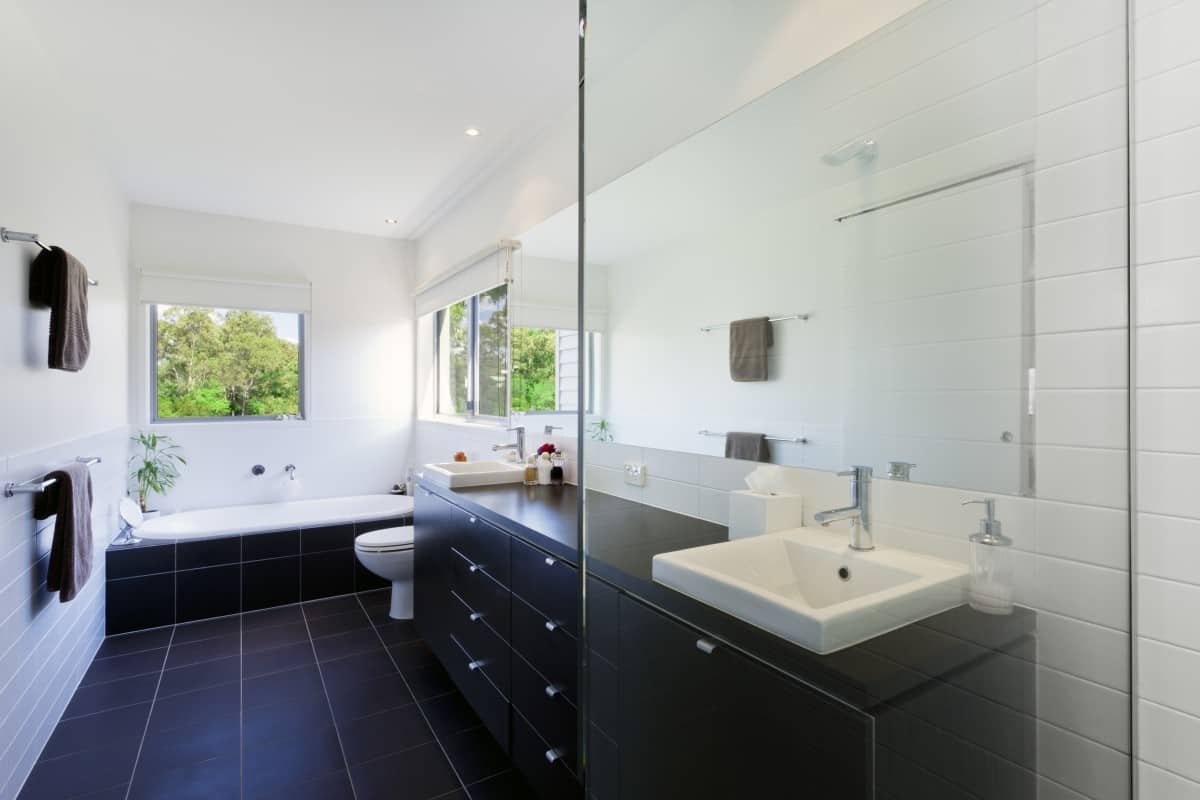
We recommend using semi-gloss or gloss for bathrooms because their moisture-resistant properties reduce the risk of mildew and dampness. Furthermore, gloss reflects light and can take regular rigorous cleaning.
Bedrooms
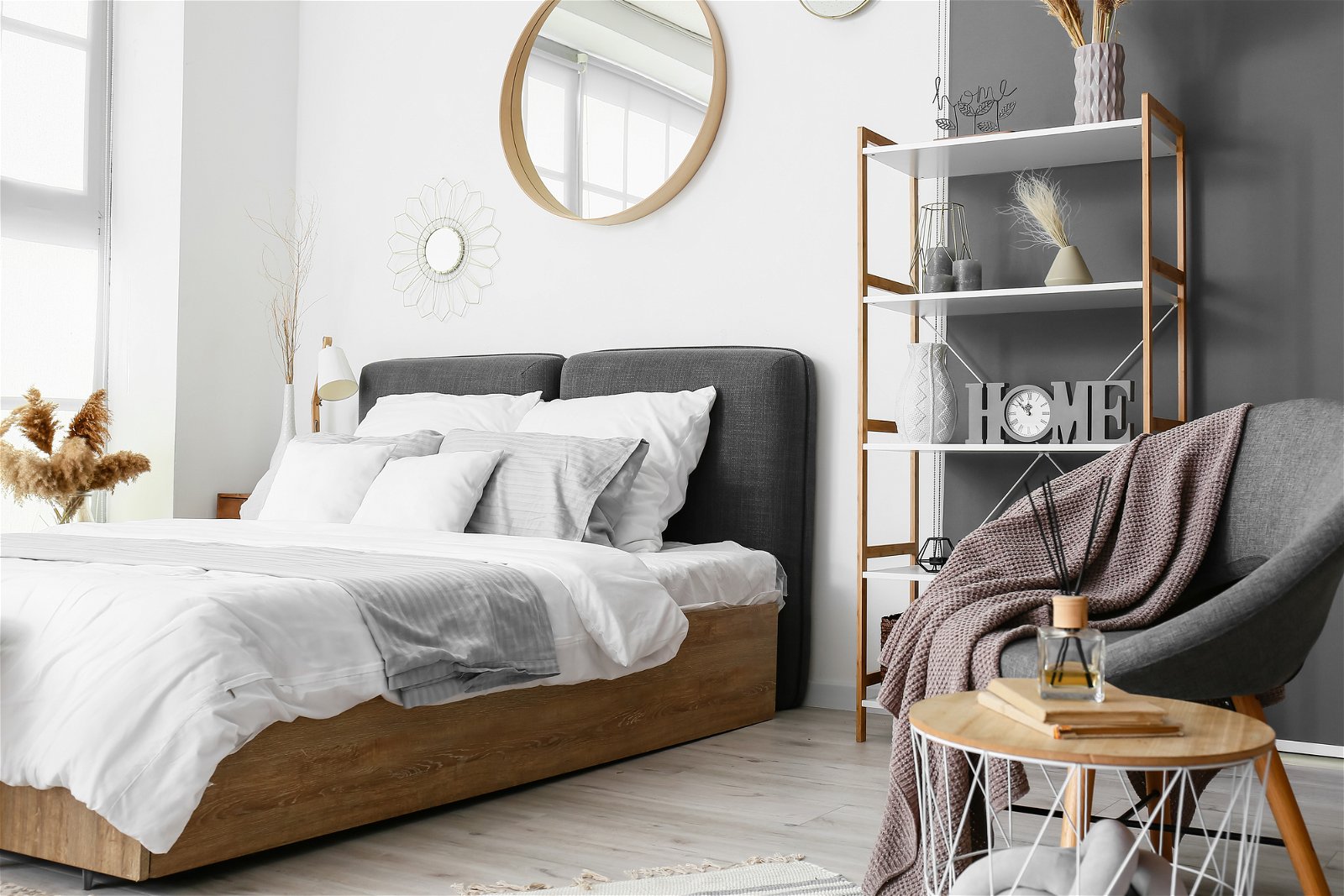
As bedrooms are low to medium-traffic spaces, choosing the perfect finish depends on your room’s size and the aesthetic you’re trying to achieve.
If your room is small and you want to maximise natural light, a gloss finish makes a room feel bigger and brighter.
Matt’s smooth and velvety finish brings depth to a large room for a cosier vibe.
Living Rooms
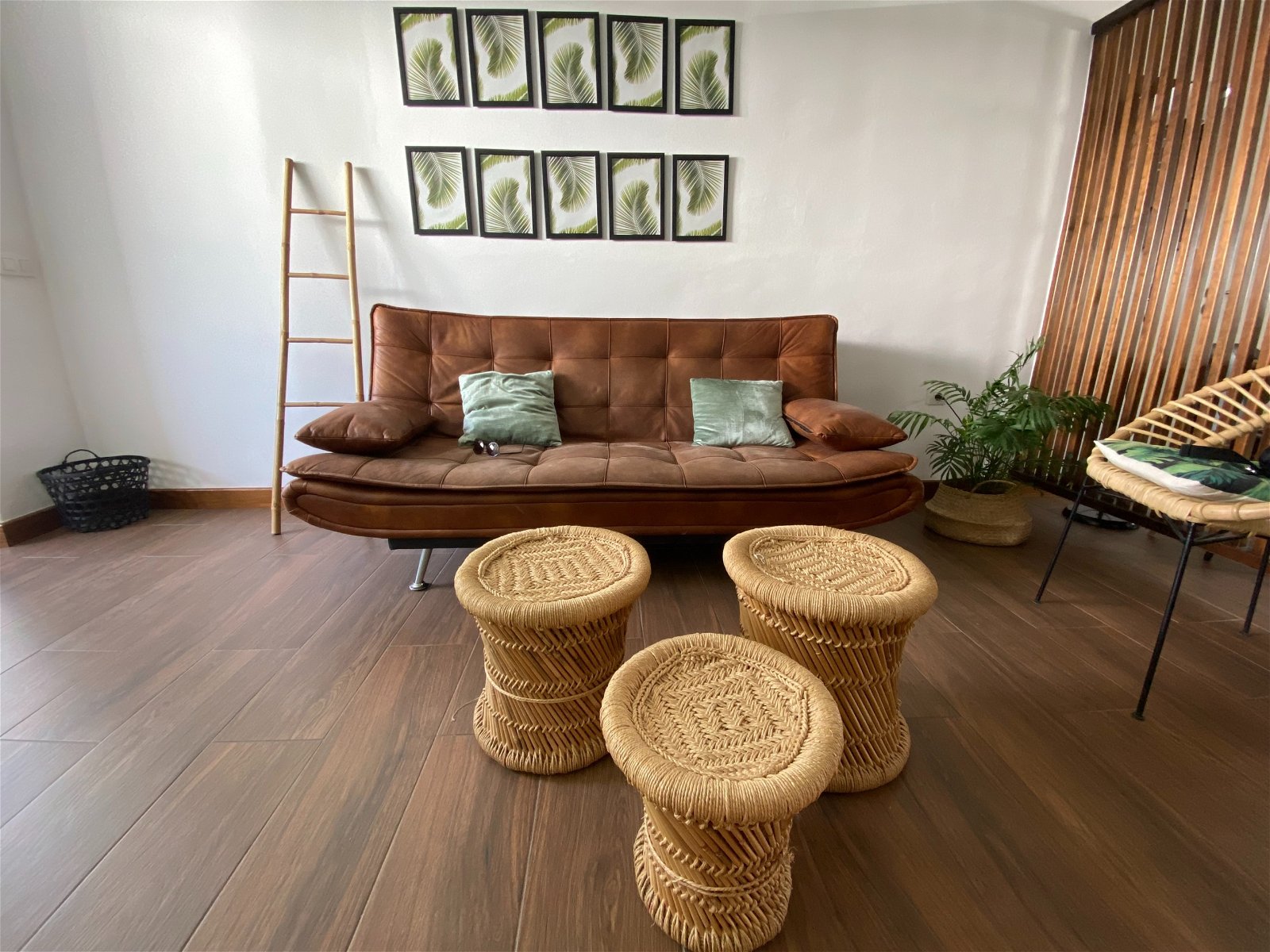
For living rooms, we recommend a flat or matt finish. However, many homeowners opt for satin because it reflects light, making their rooms feel lovely and bright.
Eggshell is a nice middle-ground as it’s more durable than matt but not as shiny as satin.
Remember, if you want to hide any imperfections in your walls, we recommend flat matt or matt.
Painting Walls and Ceilings — General Tips

Whether you choose water or oil-based paint, knowing what’s already on your walls and how you plan to cover them is essential. For example, water-based paints are fine when painting over existing oil-based paint, but you can’t paint over water-based paints with oil-based paints.
To determine whether you have water or oil-based paint on your wall, dip a cloth into denatured alcohol and wipe the surface. If pigment appears on the cloth, you have water-based paint. If not, it’s oil-based.
Damaged Walls
Use a matt finish if you want good coverage on walls with marks, bumps and small holes.
Matt paints have a thicker formula which produces better coverage, and their flatter appearance makes imperfections less noticeable.
Ceilings
A satin emulsion is a good option for ceilings. Or, if you’re painting a room with plenty of moisture, like a kitchen or bathroom, we recommend a semi-gloss emulsion. These emulsion paints stand up to stains, mildew and dirt extremely well.
Pro Tip: We recommend using a white or ivory shade, which creates the illusion of higher ceilings and more space.
Paint Application Tools

This section looks at paint application tools, including the best tool for each paint and surface type.
Paintbrushes
You can use paintbrushes for almost any type of paint and surface. We recommend using high-quality paintbrushes to avoid loose bristles falling out.
Rollers
Rollers cover an area roughly 3x faster than a paintbrush, and you can use one for almost any type of paint and surface.
When buying a paint roller, always buy one with interchangeable sleeves, as this allows you to change the sleeve for various paint and surface types.
Choose long-haired synthetic rollers for textured surfaces, but use a shorter pile for smooth surfaces and paints with a gloss or satin finish.
Pro Tip: choose a roller that attaches to an extension pole when painting floors and ceilings.
Paint Pads
Paint pads are great for tight spots and work well with oil and water-based paints. However, we don’t recommend using paint pads for oil finishes, colour-preserving paints or wax polishes.
Paint Sprayers
Paint sprayers can save you lots of time and provide excellent coverage.
Paint sprayers work with various finishes, including water and oil-based paints, wood stains and varnishes. However, we don’t recommend using paint sprayers for oil/wax polishes or textured and cement paints.
Paint Thinners
When the paint is too thick, you can’t apply it properly. To fix this, use paint thinners to thin out lumpy paint.
Oil-based paints are thinned with white spirit, while emulsions thin with acrylic paint and water.
Pro Tip: Some specialist paints may need special thinners that you can only get from the manufacturer.
Paint Application Matrix
The matrix below shows what paints are suitable for each interior surface. It also covers recommended application methods, drying times, paint thinners, number of coats and expected coverage.
Note: Circle denotes compatibility. All surfaces must be clean, sound, dry and free from organic growth. Data source: Collins DIY Manual.
| FINISHES FOR INTERIOR WALLS AND CEILINGS | |||||||
| Emulsion | One-coat Emulsion | New-plaster Emulsion | Solvent-based Paint | Acrylic Paint | Textured Paint | Cement Paint | |
| Suitable to Cover | |||||||
| Plaster | o | o | o | o | o | o | o |
| Wallpaper | o | o | o | o | o | ||
| Brick | o | o | o | o | o | o | o |
| Stone | o | o | o | o | o | o | o |
| Concrete | o | o | o | o | o | o | o |
| Previously painted surface | o | o | o | o | o | o | |
| Drying Time in Hours | |||||||
| Touch dry | 1-2 | 3-4 | 1-2 | 2-4 | 1-2 | 24 | 1-2 |
| Recoatable | 4 | 4 | 16-18 | 4 | 24 | ||
| Thinners | |||||||
| Water | o | o | o | o | o | o | |
| White spirit | o | ||||||
| Number of Coats | |||||||
| Normal conditions | 2 | 1 | 1-2 | 1-2 | 1 | 2 | |
| Coverage | |||||||
| Sq metres per litre | 9-15 | 8 | 11 | 15-16 | 10-14 | 2-3 | |
| Sq metres per kg | 1-6 | ||||||
| Method of Application | |||||||
| Brush | o | o | o | o | o | o | o |
| Roller | o | o | o | o | o | o | o |
| Paint Sprayer | o | o | o | o | o |
Final Thoughts
The video below summarises the key points if you’re still confused by the complicated world of paint and its various types, finishes and colours.

Once you’re ready to start decorating, check out our complete guide to painting a room.

